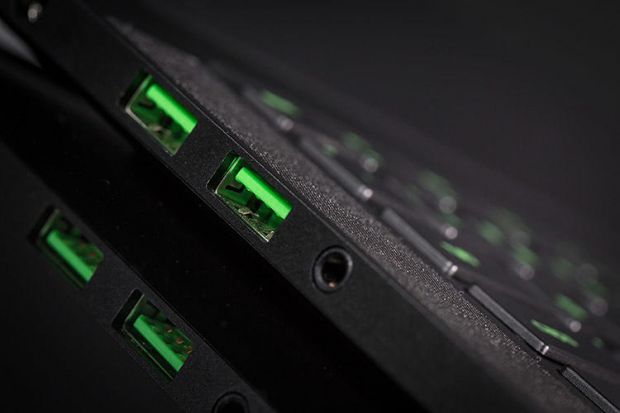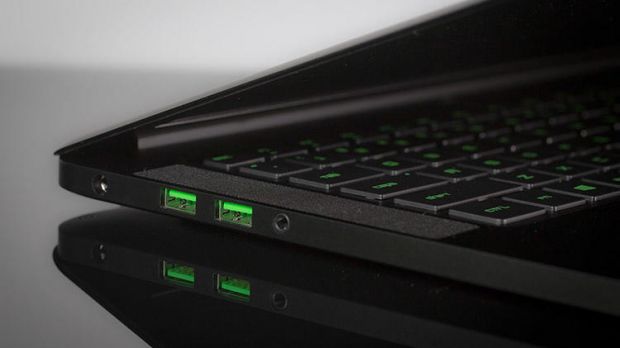As we told you earlier today, Razor launched a new Blade gaming laptop that boasts a QHD display and the new NVIDIA GeForce GTX 870M graphics card. This is actually the second-generation 14-incher coming out from the company, that has been mostly known for its gaming accessories.
To commemorate the occasion, Fastcodesign got in touch with Razer CEO, Min Liang Tan to discuss the amazing capabilities of the new Blade. During the interview, Tan revealed an interesting piece of information, pertaining to the Razer’s design process.
Apparently, the company spent “hundreds of thousands of dollars” to design the USB ports on the new laptop.
That’s pretty strange, considering USB ports usually take the manufacturing company back with a meager $1 / €0.72.
Regularly, there’s no design process involved whatsoever, as USBs need to be of one size, in order to be compatible with all the gadgets to be connected into them. So why did Razer spend so much money for such a simple part?
For those not familiar with Razer gaming laptops, we should tell you they are pretty indistinguishable in the industry.
For starters, the products are usually named after venomous snakes or spiders, including BlackWidow Ultimate Dragon Age II Edition, DeathAdder or Naga Hex. On top of that, the Razer gaming line boasts a predilection for acid green (to make you think of Venom of course) design cues.
Razer’s CEO makes a point in highlighting he’s involved into all stages leading to the end product, starting from the design phase and all the way through production. This focusing on details has made the new Razer laptop a real beauty to behold. For starters, it’s thinner than the MacBook Pro with Retina Display and said to be more powerful.
And it is precisely this attention to details that has led the company to focus on one of the most unlikely part of the laptops, the USB port. Today, USB is an open standard, which means an industry group will certify the ports before the product is headed out to customers, who need to know which gadgets will work with respective ports.
Once in a while, a new version is announced and the most recent one being USB 3.0. You might have noticed that different ports are sometimes colored. Black is for USB 2.0 while USB 3.0 is blue, but there are no rules set in stone.
Theoretically, any manufacturer could use any colors they want, but that usually doesn't happen because manufacturing plants in China and Taiwan usually follow the “standard.”But that proved to be a problem for Razer.
“We realized it was just one of those things that always frustrated us. Someone would say ‘this is the way it's always been.’ Usually we try to challenge that.”
Requesting a color change is certainly doable, but quite expensive. Razer, on the other hand, didn't seem to care much about the costs, so it spent about $380,000 / €272,616 to design their own USB ports.
As you’d expect, the USBs come in the specific acid green color we highlighted as being characteristic of the Razer gaming line-up. And apparently getting the right shade of green in the plastic the USB is made of wasn't an easy task, that required a lot of trial and error.
Certainly, the USB ports aren't the ones that makes the Blade a competitive product, but the company’s dedication and eagerness to create a brand for itself can be thought of as inspirational.

 14 DAY TRIAL //
14 DAY TRIAL // 

